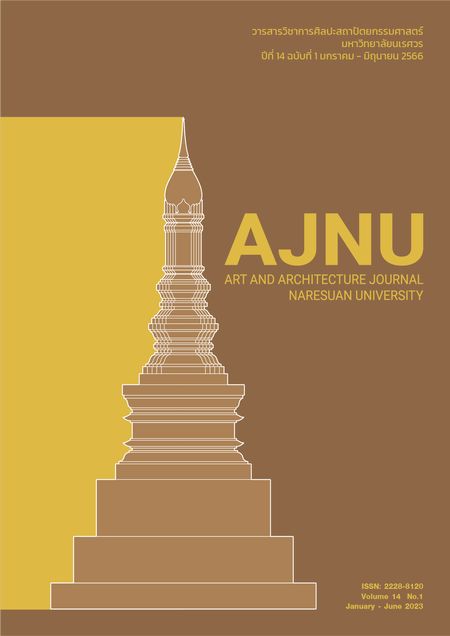Study the approach to designing a virtual reality environment.
Main Article Content
Abstract
This article Study and gather knowledge and factors for designing a virtual reality (VR) environment in order to apply the knowledge that has been studied and guide the design of a virtual reality (VR) environment, including developing techniques that can be further developed. with the design of virtual reality environments in various forms Covering to related fields The objectives are 1) to collect data on the design factors of a virtual reality (VR) environment; 2) to analyze the design of a virtual reality (VR) environment; 3) to apply knowledge as a guideline for the design of a virtual reality environment (VR) by the sample consisted of Multimedia design student at Naresuan University and 3 experts were used. Virtual reality (VR) environment factors that can be applied and developed further in research.
Article Details

This work is licensed under a Creative Commons Attribution-NonCommercial-NoDerivatives 4.0 International License.
References
Aylett, R., & Louchart, S. (2003). Towards a narrative theory of virtual reality. Virtual Reality, 7(1), 2-9.
Denpaiboon, C., & Pongpisit, H. (2011). Role-play gaming simulation for climate change protection and
mitigation of cultural heritage: A case study of Ayutthaya Historic City. In: Built Environment
Research Associates Conference, BERAC II, 2011, pp. 107-126.
Dumol, T., Lascano, P., Magno, J., & Tiongson, R. (2014). Minmin escapes from disaster: An Oculus Rift
disaster simulation game. Philippine IT Journal, 7(1), 49-54.
Hu, Y., Zhu, J., Li, W., Zhang, Y., Zhu, Q., Qi, H., ... & Zhang, P. (2018). Construction and optimization of three-
dimensional disaster scenes within mobile virtual reality. ISPRS International Journal of Geo-
Information, 7(6), 215.
Kemec, S., Duzgun, H. S., & Zlatanova, S. (2009). A conceptual framework for 3D visualization to support
urban disaster management. In: Proceedings of the Joint Symposium of ICA WG on CEWaCM and JBGIS
G14DM, 268-278. International Cartographic Association, ICA/I
Moussa, N. (2014). The importance of learning styles in education. Institute for Learning Styles Journal,
(2), 19-27.
Nguyen, V. T., Jung, K., & Dang, T. (2019). Vrescuer: A virtual reality application for disaster response
training. In: 2019 IEEE International Conference on Artificial Intelligence and Virtual Reality (AIVR), pp.
-202.
Pajorová, E., Hluchý, L., Halada, L., & Slížik, P. (2007). 3D visualization tool for virtual models of natural
disasters. In: Proceedings of the Virtual Reality International Conference, pp. 37-43.
Pananont, P. (2018). Lessons learned from tear stains "Sulawesi Tsunami", hurry to escape, do not wait
for the warning. Available from: https://mgronline.com/science/detail/9610000097664 [Accessed 15th
January 2020].
Ren, A., Chen, C., Shi, J., & Zou, L. (2006, June). Application Of Virtual Reality Technology To Evacuation
Simulation In Fire Disaster. In CGVR (pp. 15-21).
Saitoh, T., Noguchi, G., & Inoue, T. (2018). Tsunami run-up simulation using particle method and its
visualization with Unity. Available from: https://www.sci-en-tech.com/ICCM2018/PDFs/3474-11010-1-
PB.pdf [Accessed 20th March 2021].
Sermet, Y., & Demir, I. (2019). Flood action VR: A virtual reality framework for disaster awareness and
emergency response training. In: ACM SIGGRAPH 2019 Posters, pp. 1-2.
Sharma, S., Jerripothula, S., Mackey, S., & Soumare, O. (2014). Immersive virtual reality environment of a
subway evacuation on a cloud for disaster preparedness and response training. In: 2014 IEEE
symposium on computational intelligence for human-like intelligence (CIHLI), pp. 1-6.


